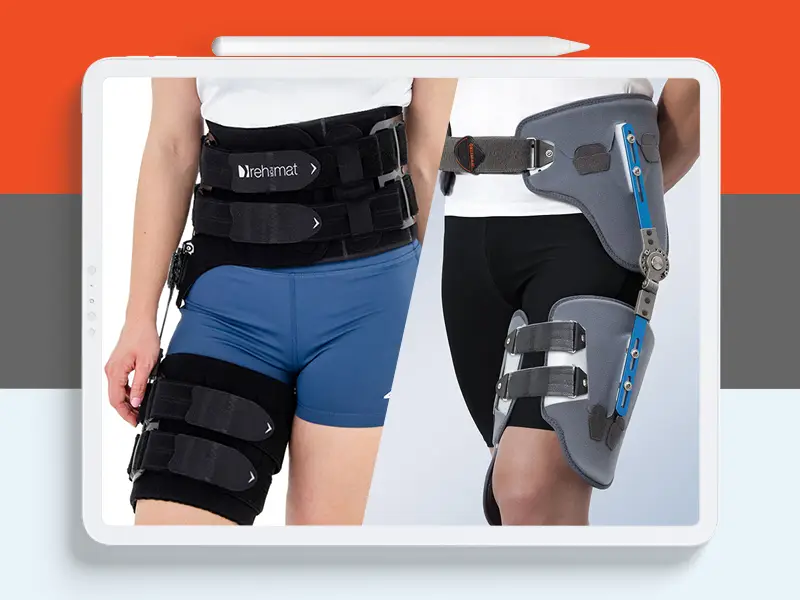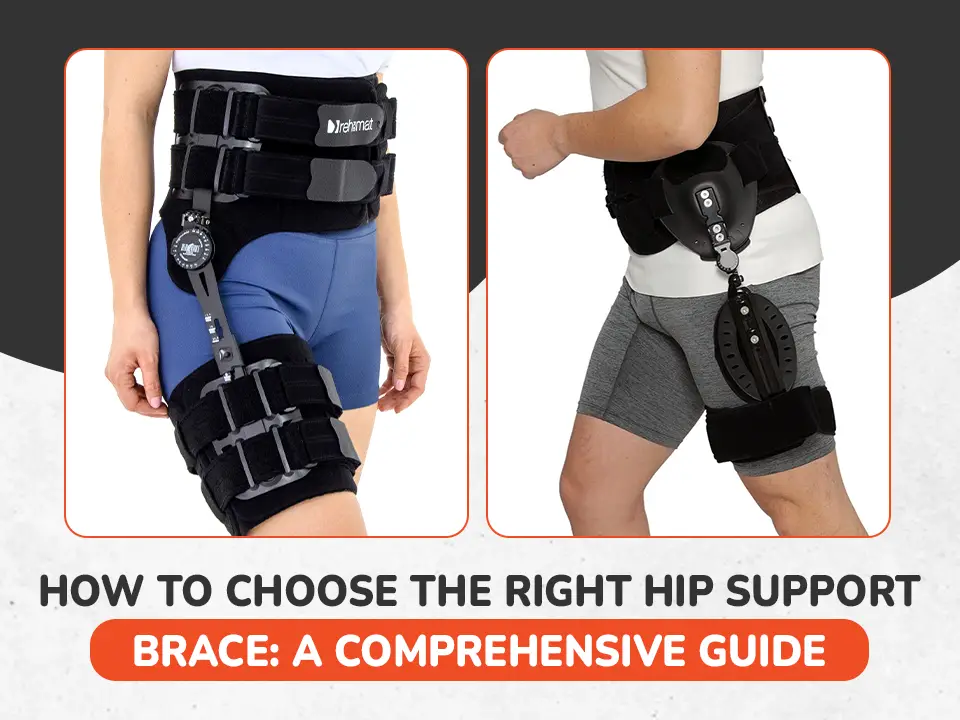In the journey towards recovery and pain management, hip support braces stand out as pivotal aids for those grappling with hip discomfort or recovering from surgery. These devices are not just functional; they are transformative, offering stability and support that can radically improve daily life. Whether you’re an athlete, a recovering patient, or someone experiencing chronic pain, understanding the role and proper use of hip support braces can lead to significant improvements in mobility and quality of life. This article provides a comprehensive guide to selecting, using, and maintaining the right hip brace for your needs, backed by expert advice and practical tips.
Understanding Hip Brace Necessity
To effectively address hip-related discomfort or injury, it’s crucial to understand when and why a hip brace may be necessary. These supportive devices play a significant role in managing various hip conditions, and recognizing their potential benefits is the first step in a successful recovery journey. Here are key factors to consider:
- Identifying the Need: Recognize the situations where a hip brace becomes essential. Persistent hip pain, whether due to injury, degenerative conditions, or post-surgical recovery, often warrants the use of a hip brace. A hip brace can serve as a preventive tool against potential injuries for athletes or individuals engaged in high-impact activities.
- Consulting Healthcare Professionals: Before making any decisions about a hip brace, it’s vital to consult with medical experts. A doctor or physical therapist can accurately diagnose your hip condition and suggest the most suitable type of brace for your specific needs. Their professional guidance ensures you choose a brace that meets your medical requirements.
- Understanding Your Activity Level: The type of hip brace required can vary greatly depending on your daily activities. A brace offering more mobility might be preferable for those leading an active lifestyle or participating in sports. In contrast, individuals with less active lifestyles or those in recovery might benefit more from braces that offer greater support and stabilization.
- Assessing Severity of Condition: The severity of your hip condition plays a crucial role in selecting the right brace. More severe conditions, such as major injuries or post-operative recovery, might require a sturdier, more supportive brace. On the other hand, mild discomfort or preventative care may only necessitate a lighter, more flexible brace.
- Considering Long-Term Use: If your hip condition is chronic or you anticipate long-term use of a hip brace, factors like comfort, durability, and ease of maintenance become increasingly important. A brace that is comfortable for extended wear and easy to care for will greatly enhance your overall experience and compliance with treatment protocols.
Recognizing the importance of these factors will guide you in making an informed decision about using a hip brace, ultimately leading to more effective pain management and recovery.
Types of Hip Support Braces
Hip support braces come in various designs, each tailored to address specific hip health and recovery needs. Choosing the right type of brace is crucial for effective treatment and comfort. Let’s delve into the most common types of hip braces and their distinct purposes:
- Compression Braces: These braces are best suited for individuals experiencing mild hip pain or swelling. Made from stretchable and breathable materials, compression braces snugly fit around the hip area, providing gentle yet effective support.
- Stabilizing Braces: For more severe hip injuries or after surgical procedures, stabilizing braces are the go-to option. They are constructed with firmer materials and often include additional support structures to secure the hip joint firmly.
- Hip Abduction Braces: These braces are specifically designed for use after certain hip surgeries or in cases of severe hip dislocations. Their primary function is to maintain proper hip joint alignment, preventing dislocation or improper healing.
- Unloader Braces: Unloader braces are engineered for individuals suffering from conditions like osteoarthritis, where one part of the hip joint is more affected than the other. These braces work by redistributing the weight and pressure away from the damaged hip joint area, thereby providing significant pain relief.
- Activity-Specific Braces: Hip braces are also designed for specific activities or sports. These braces balance support and flexibility, ensuring protection during high-impact or repetitive motion activities.
Each type of hip brace serves a distinct purpose, catering to various degrees of hip issues, from mild discomfort to severe conditions. Understanding the specific functionalities of these braces can guide you in selecting the one that best aligns with your medical needs and lifestyle.
Read More: Maximizing Comfort: How Hip Braces for Pain Improve Your Daily Life
Selecting the Perfect Fit

Selecting the ideal hip support brace involves more than just picking one off the shelf. It requires a careful assessment of your individual needs and the specific features of the brace. Here are crucial factors to consider when choosing the perfect fit for your hip brace:
- Assessing Your Condition: Begin by assessing the severity of your hip condition. Are you recovering from surgery, managing chronic pain, or looking for support during physical activities? Your daily routine and the nature of your hip issue significantly determine the type of brace you need.
- Comfort and Adjustability: A key aspect of any brace is how comfortably it fits. It should snugly embrace your hip area without causing discomfort or restricting blood flow. Look for braces with adjustable straps or features that allow you to customize the fit to your body.
- Material and Durability: The materials used in the brace should be breathable and gentle on the skin to avoid irritation, especially if you need to wear the brace for extended periods. Durability is equally important; a well-made brace can withstand daily wear and tear, ensuring you maximise your investment.
- Ease of Use: If you’re going to use the brace frequently, you’ll want one that’s easy to put on and take off. A brace that requires significant effort or assistance might not be the best choice, especially for those who value independence.
- Compatibility with Your Lifestyle: Consider how well the brace fits into your daily life. If you’re an active individual, you’ll need a brace that allows a good range of motion without compromising support.
By carefully considering these factors, you can choose a hip support brace that addresses your medical needs and fits seamlessly into your daily routine, enhancing your overall quality of life.
Optimizing the Use and Care of Hip Support Braces

To ensure that you reap the maximum benefits from your hip support brace, it’s crucial to use it properly and maintain it well. Here’s a guide to help you optimize the use and care of your brace:
Proper Use of Hip Braces
- Correct Application: Always start by reading the manufacturer’s instructions carefully. Each brace model might have specific guidelines for wearing it to ensure it provides the right support.
- Adjust for Comfort: Your activities throughout the day might require different levels of support. Adjust the brace as needed for optimal comfort and support during various activities. Ensure it’s snug but not overly tight to prevent discomfort or circulation issues.
- Layering for Skin Protection: Consider wearing a thin layer, like a soft fabric, under the brace to protect your skin from irritation and to maintain hygiene.
Maintenance and Care
- Regular Cleaning: Follow the manufacturer’s guidelines for cleaning the brace. Most braces can be hand-washed with mild soap and air-dried. Avoid harsh detergents and machine drying unless specified.
- Periodic Inspections: Regularly inspect your brace for any signs of wear, tear, or damage. A damaged brace might not provide the necessary support and could cause discomfort or further injury.
- Proper Storage: Store your brace in a dry and cool place when not in use. Proper storage helps maintain the material integrity and shape of the brace.
Enhancing Benefits Through Integrated Care
- Complementary Therapies: Incorporate the use of the hip brace into a broader treatment plan. This might include physical therapy, targeted exercises, and other recommended medical treatments. The brace should complement these therapies, not replace them.
- Lifestyle Adjustments: Make changes to your daily routine to accommodate the brace. This might include modifying how you sit, stand, or engage in physical activities to enhance the brace’s effectiveness.
- Listening to Your Body: Pay attention to how your body responds to the brace. If you experience new pain, discomfort, or skin issues, consult your healthcare provider for guidance and possible adjustments.
By following these guidelines, you can make the most out of your hip support brace, ensuring that it effectively aids your recovery and enhances your daily comfort and mobility. Remember, a well-maintained and properly used brace can significantly improve your quality of life.
FAQs
Q: Can I wear a hip brace all day?
A: It depends on your condition and the type of brace. Consult with your healthcare provider for personalized advice.
Q: Does insurance cover hip braces?
A: Coverage varies by insurance plan. Check with your provider to understand your coverage details.
Q: Can hip braces help with arthritis?
A: Yes, especially unloader braces designed to relieve pain by redistributing weight.
Q: How long does it take to get used to a hip brace?
A: Adjustment periods vary, but most people get accustomed to wearing a brace within a few days to a week.
Conclusion
Choosing the right hip support brace is crucial in managing hip-related issues. You can significantly improve your hip health and mobility by understanding your specific needs, consulting professionals, and selecting a brace that offers comfort and support. Remember, a hip brace is an aid, not a cure, and should be part of a comprehensive treatment plan.
Heal Medical Supply’s medical hip brace product is lightweight, breathable, and supportive. It’s easy to adjust for abduction and offers a customizable fit. If you’ve been dealing with hip pain or are recovering from injury or surgery, get the hip support you need. Heal Medical Supply is here for you. Contact us today for a free insurance eligibility check.




